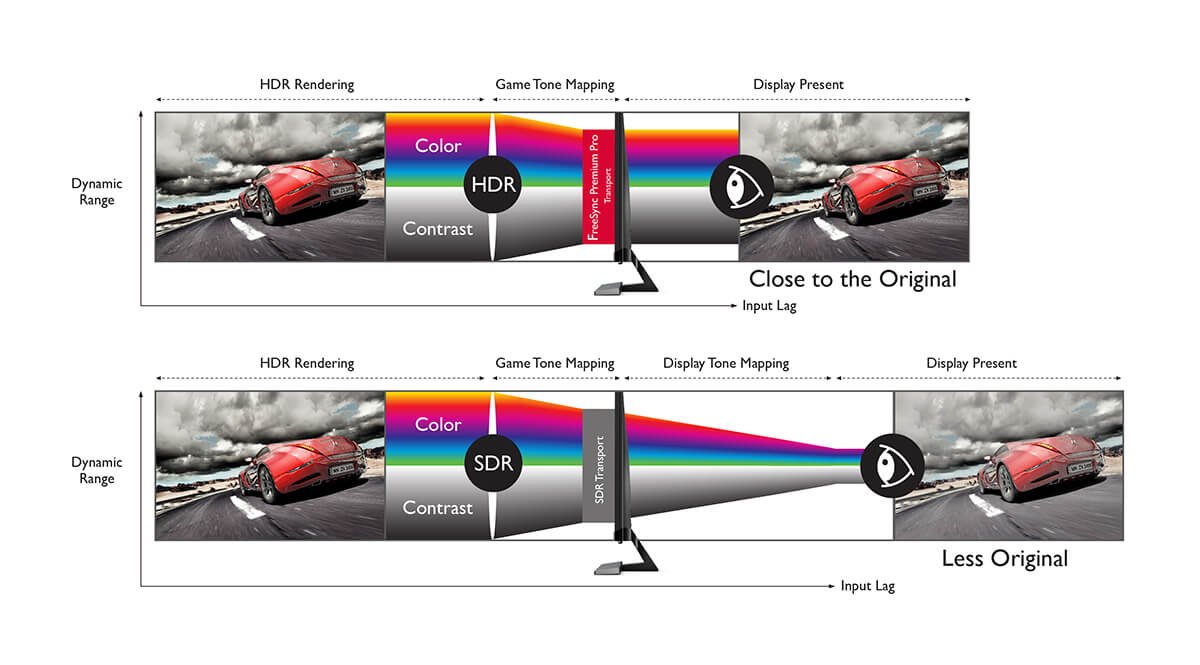

As a gamer who values image quality, you might be interested in learning about FreeSync™ technology. Let's find out what FreeSync™ technology is: FreeSync™, FreeSync™ Premium, FreeSync™ Premium Pro and how they function to bring you an enjoyable gameplay.
FreeSync™ is a type of adaptive synchronization technology for LCD displays. It helps displays eliminate screen tearing, stuttering and juddering by synchronizing the monitor’s refresh rate with the framerate from the GPU (the processing unit of a graphics card). When a monitor is equipped with FreeSync™, it gains a variable refresh rate (VRR) which matches the framerate of your AMD graphics card. With FreeSync™, you will enjoy the optimal framerate your graphics card can achieve.

On the market, there are two mainstream technologies to display smooth pictures: FreeSync™ and G-Sync. Both FreeSync™ and G-sync are designed to achieve the tearing- and stuttering-free effect. The difference is, FreeSync™ is developed by AMD and G-sync by Nvidia. To enjoy FreeSync™’s variable refresh rate, you need to make sure that your laptop has an AMD graphics card or that the game console you use is equipped with the AMD processor. G-Sync technology is designed to synchronize a monitor’s refresh rate with the framerate of an Nvidia graphics card. Both technologies have their own advocates.
For console gamers who play Xbox, FreeSync™-supported displays are a perfect match because Xbox consoles use AMD chips. For gamers who also consider using a TV for gaming, take a look at this article, and you will find out the relationship between the Refresh Rate, Input Lag and FreeSync™ and know what to look for. Monitors make a better choice for gaming. And there’s a lot of FreeSync™ monitors available on the market and in a wide range of specifications. This therefore provides gamers with a wide range of monitor choices. AMD later launched FreeSync™ 2 in early 2017, incorporating HDR effect for an even more immersive gaming experience. And in early 2020, AMD has added a new tier FreeSync™ Premium and restructrured FreeSync™ for HDR content as FreeSync™ Premium Pro to satisfy gamers’ needs and cater to their expected gaming experiences.
What delimited the previous two FreeSync™ tiers was primarily the HDR indicator. Adding the new tier, FreeSync™ Premium, AMD intends to incorporate two more benefits to make it easier for gamers to pick out the monitors of their choice:
While the new tier FreeSync™ Premium Pro combines HDR support with variable refresh rate technology, offering smoother gameplay by twice the perceptual color space of sRGB for better brightness and contrast. You can check the image below to see how FreeSync™ Premium Pro renders images. If you are a gamer who values HDR effect, a Freesync™ Premium Pro monitor is right for you.
